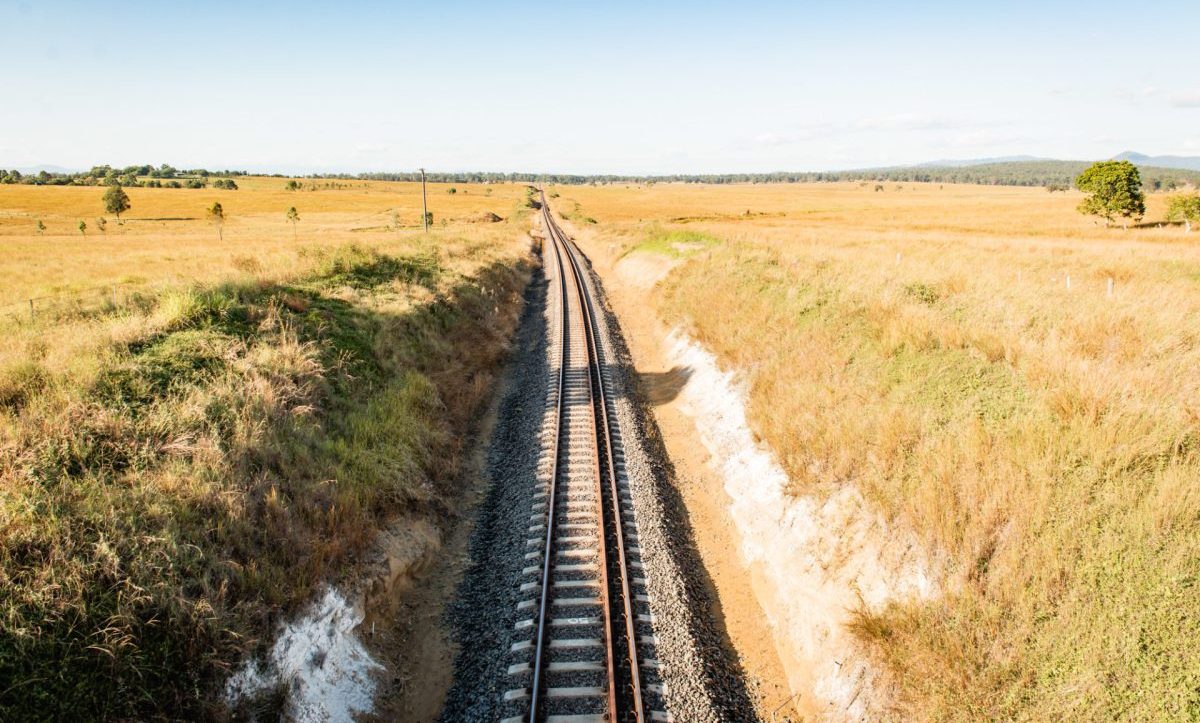
THE Inland Rail review released on April 6 has provided direction for how the project should proceed, but has given minimal certainty for the problematic Queensland alignments.
This ambiguity has potentially left the door open for innovative projects and frameworks to complete the five sections covering 384km in Qld.
These include proposed solutions to getting freight trains to the Port of Brisbane, diverting the lines away from regional towns, and opening economic opportunities for Gladstone and Central Queensland.
Problems from beginning
In her review, Kerry Schott said project leader Australian Rail Track Corporation prepared “poor-quality Environmental Impact Statements” for the Ql sections which “have not been capable of acceptance”.
She said this contributed to significant delays in moving the sections forward as well as “to an initial lack of confidence in the project”.
However, Dr Schott said she was assured that ARTC and the Qld Government have worked through these issues.
“I am convinced that many of these problems are now overcome and I received more positive feedback from Qld Government officials,” Dr Schott said.
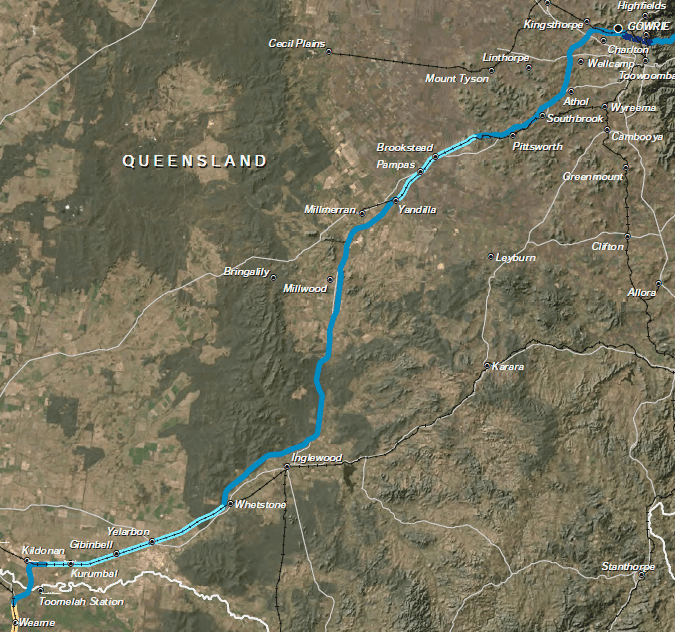
The planned Inland Rail alignment in Qld will pass to the east of Goondiwindi and extend to the Port of Brisbane as its northern terminus. Image: ARTC
Possibilities for terminus
The Qld Inland Rail “bookend” has been one of the greatest challenges for the project since it was conceived, with long-term termination point place-holder Acacia Ridge attracting little support from governments, residents and industry.
The current preferred alignment includes two lines from Kagaru, a suburb of Logan, south to Bromelton and Kagaru to Acacia Ridge.
The plan includes using existing intermodal terminals at Acacia Ridge and Bromelton.
However, Dr Schott noted that the Acacia Ridge site was “expected to reach capacity in 2025-27 and cannot accommodate the longer 1800m double-stacked trains that are expected to use the Inland Rail network”.
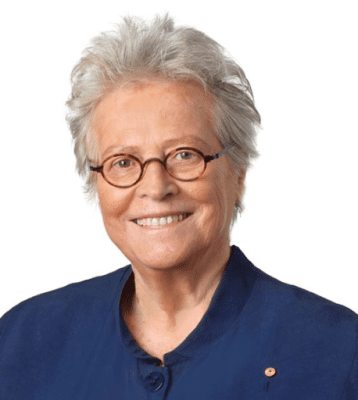
Dr Kerry Schott
The Kagaru to Acacia Ridge section has also attracted criticism from the Logan City Council, which fears the significant impact the rail line will have on residents.
In response, Dr Schott recommended instead extending the line to Ebenezer, west of Willowbank in the City of Ipswich, and construction of a new intermodal terminal.
Her plan would involve stopping double-stacking at Ebenezer and offering single-stacked service through to Kagaru.
Dr Schott said this was the only feasible solution that “should save significant cost and still deliver new network connectivity and resilience”.
Ebenezer to Port options
The review provided little in the way of ideas for improving the efficiency of freighting goods to the Port of Brisbane via Ebenezer.
A long-term proponent of the Ebenezer terminal proposal has come from National Truck Rail.
This private-sector initiative has put together a plan, titled PortConnex, which involves connecting the hub to the Port of Brisbane via a dedicated freight-link tunnel.
Central to the plan is a line running through a proposed tunnel under the Brisbane suburbs of Swanbank, Gailes, Willawong and Pine Mountain to connect with the existing standard-gauge rail to the Port of Brisbane.
NTR chairman and former Thiess CEO Martin Albrecht said the proposal featured the use of autonomous battery-powered freight shuttles which would be suitable for transporting most freight including bulk grain, coal and cattle.
“What the Schott review has done has now put a clear pathway to reposition the terminus of Inland Rail from Acacia Ridge to Ebenezer,” Mr Albrecht said.
“It is a magnificent endorsement for us to now think about a long tunnel that will connect from Ebenezer to the Port of Brisbane.
“What you then have is the possibility for all the freight, grain and minerals and everything that comes from the west of the state to come to Ebenezer and then on a port shuttle.”
He said NTR estimated that the project would cost $6B and could be constructed by 2030.
“It’s a very elegant solution and it’s something that we’re really capable of doing.”
Mr Albrecht said the project has the support of the Southeast Queensland Council of Mayors, which crucially includes the Brisbane City Council.
The proposal is yet to receive backing from either the Qld or Federal Governments.
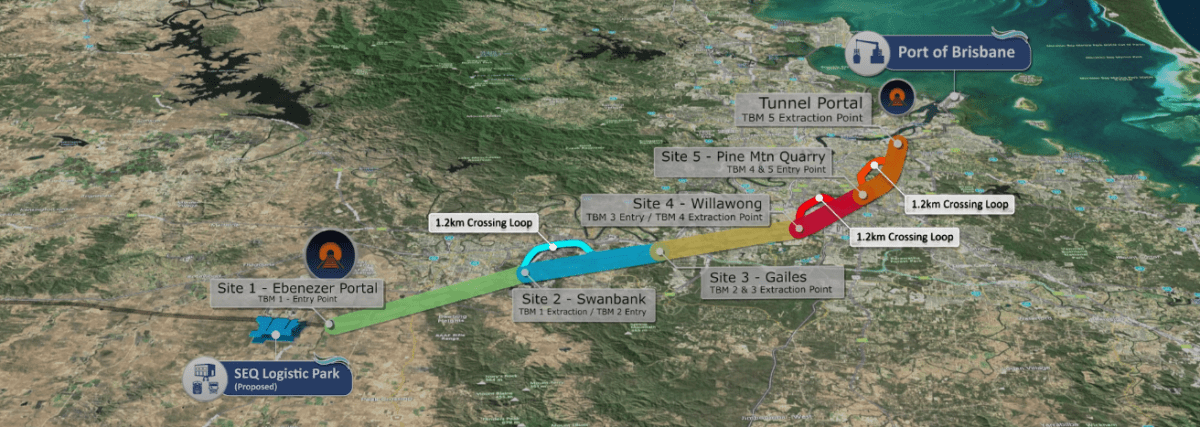
The route for the proposed PortConnex project which would connect the Inland Rail to the Port of Brisbane via a tunnel. Photo: NTR
Major route changes
Vocal community opposition, likely fueled by poor EIS, in the Toowoomba and Lockyer Valley regional council regions has added to the project delays and distrust amongst Queensland residents.
Central to these debates were the Border-to-Gowrie and Gowrie-to-Kagaru sections.
While the Inland Rail review recommended that “there is no reason for route change in any major way”, it did acknowledge the fears of Gatton residents, a town set to be bisected by the G2K line.
“[It] is recommended that the traffic disruption is reviewed from time-to-time and that an easement by-passing the town be preserved for future use.”
In its response, the Federal Government has agreed “to continue monitoring freight traffic along the corridor” but noted that “it is a state responsibility to identify and preserve future transport options”.
The review provides some hope for the Lockyer Valley Regional Council, which has been against the alignment from the beginning.
“Through our own internal review, Council compared the pros and cons of the line on our towns, and we’re confident there is justification for a rail realignment,” LVRC Mayor Tanya Milligan said in a statement.
“This project will have a generational impact on our region, and there is no way national benefits should come at the cost of our residents.
“What we want is to secure an alignment that protects and respects our community – and that can only be achieved by diverting around our townships, not coming straight through.”
No B2G changes mooted
The review provided no mention of potential changes to the B2G section which runs across the Condamine floodplain and agricultural land west of Toowoomba.
Millmerran Rail Group has warned ARTC for several years about the potential flooding risks to the communities along the alignment.
“We repeatedly told ARTC, the previous government and the Senate inquiry that ARTC’s plans were flawed, and they would increase the flooding risk on the Condamine River floodplain,” MRG chairman Wes Judd said.
Mr Judd said while no B2G route had been finalised, there were opportunities to change the current preferred alignment.
“The sections of Inland Rail routes in Queensland are not settled and they are subject to further delay because they are unworkable.”
He called for the B2G section to be moved to the existing south-western rail system, which was extended to Goondiwindi in 1908.
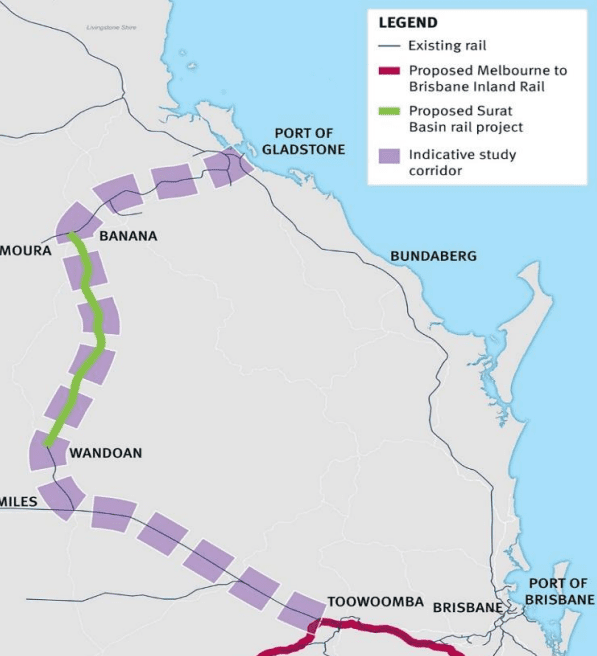
The Toowoomba to Gladstone extension route being investigated by the Queensland Government. Source: Inland Rail review
“Inland Rail should be built on the existing corridor.”
Gladstone extension considered ‘complementary’
Dr Schott’s review also examined the possible benefits of constructing a rail link from Toowoomba to Gladstone.
It looked into the proposed alignment being studied as part of a business case led by the Queensland Government.
This route would travel from Toowoomba, to Miles, Moura and through to the Port of Gladstone.
Based on this solution, Dr Schott concluded that this project “should be complementary to the end point at Brisbane”.
She said Port of Gladstone would also need investment for the extension to be successful.
“Over time, and once other ports such as Melbourne, Sydney and Brisbane become capacity constrained, Gladstone could become a fourth major port for import/export freight on the east coast.
“Such port constraints are not expected until beyond 2050 and my review noted only limited support for the extension in the short to medium term.”
Compton weighs in
Father of Inland Rail and chairman of a private company working to develop a rail line to Gladstone, Everald Compton agreed the route under consideration would not be viable.
He said other routes, such as running the line directly from Goondiwindi to Gladstone, would stack up it could reduces travel time considerably.
Grain Central: Get our free cropping news straight to your inbox – Click here

Ebenezer blew a breezer!!
Take it Gladstone direct from Goondi.
Gladstone a better port with direct access from inland and to the ocean.
If it is to become the fourth main port, why not do it now, as will most likely be done anyway by the time this is completed.